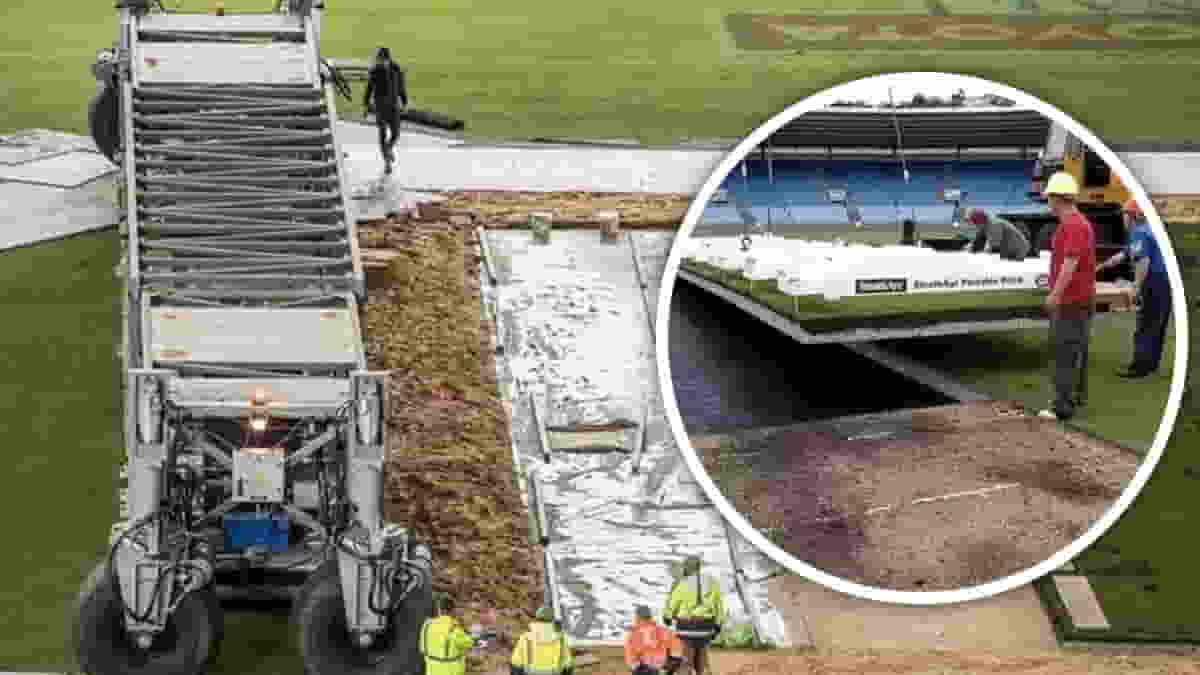
Drop-in pitch in cricket is nothing new. They have been used for a very long time. Drop-in pitches were initially used in Australia in the 1970s. The use of drop-in pitches has grown considerably more since 1996. In this article, we’ll examine drop-in pitches—what they are, how they work, and why they are used in cricket.
What is a drop-in pitch?
A drop-in pitch, as the name suggests, is essentially a pitch that is dropped on cricket fields. They are created distant from the venues. The curator then appropriately prepares the pitches after they are placed in a steel cage. When the Australian cricket season resumes, these pitches are set up on the cricket grounds after being prepared throughout the year.
Why are drop-in pitches used?
In particular multi-sport stadiums in Australia and New Zealand, drop-in pitches are utilised. The most recognisable venue that makes use of drop-in pitches is, for instance, Melbourne Cricket Ground. Rugby and football are two more sports played at the MCG in addition to cricket. Cricket pitches are removed to make room for these activities, and the empty space is filled with sand before artificial turf is rolled over to keep the grass on the ground uniform. In addition to the MCG, drop-in pitches are used at Adelaide Oval and the Optus Stadium in Perth, which also hosts several sports events. Drop-in pitches are also used at Eden Park in Auckland, New Zealand.
Size of these pitches
In situations where pitches are dropped in, the pitch size essentially stays the same. The MCG’s pitches, for instance, are 24 metres long, 3 metres broad, and 20 centimetres deep. These pitches’ composition can change based on the venue and pitch curators. The pitches at MCG are constructed using black soil and have a thin layer of grass on top.
Evolution of drop-in pitch
Drop-in pitches were criticised for being excessively flat when they initially started to be used. For the first few years, the drop-in pitches lacked the speed and bounce that made Australian pitches renowned throughout the world. Drop-in pitches were opposed on the grounds that because they were constructed off the ground, they did not deteriorate naturally. The two obviously differed as the regular pitches that were prepared on the grounds deteriorated organically. The drop-in pitches lacked bounce and speed, and no pitch cracks that would have helped the spinners get some turn.
These problems have vanished during the previous few years. The pitches at Adelaide, Perth, and the MCG are no more benign (flat). The drop-in pitches at the locations give fast bowlers bounce and pace, and in the latter stages of a test match, the spinners also get some turn and bounce.
How are drop-in pitches used?
Drop-in pitches are taken out of a cricket stadium after the last match has been played there. These pitches are taken away and prepared for the remainder of the season on other fields. They are transported to the field using a 30-tonne trailer once cricket season resumes and placed on cement tins that are buried 20 cm beneath the surface.
Future of these pitches?
Ramiz Raja, who was the Pakistan Cricket Board’s (PCB) chairman at the time, proposed the usage of drop-in pitches in Pakistan in 2021. According to the former PCB chairman, using these pitches would improve the performances of the national team overseas. Drop-in pitches were put on hold in March 2022 while the PCB sought out a consultant to give them advice on the idea’s viability.
The notion of using drop-in pitches would be something that may aid in bringing more international cricket to the country given the criticisms that the present pitches in Pakistan receive.
Also Read: Does India Need To Look Away From 3 Format Players?
“Get more breaking news, cricket updates, fixtures, and trending news only on cricfiles.com. Follow us on Facebook or Twitter and Subscribe to our YouTube Channel today.”





